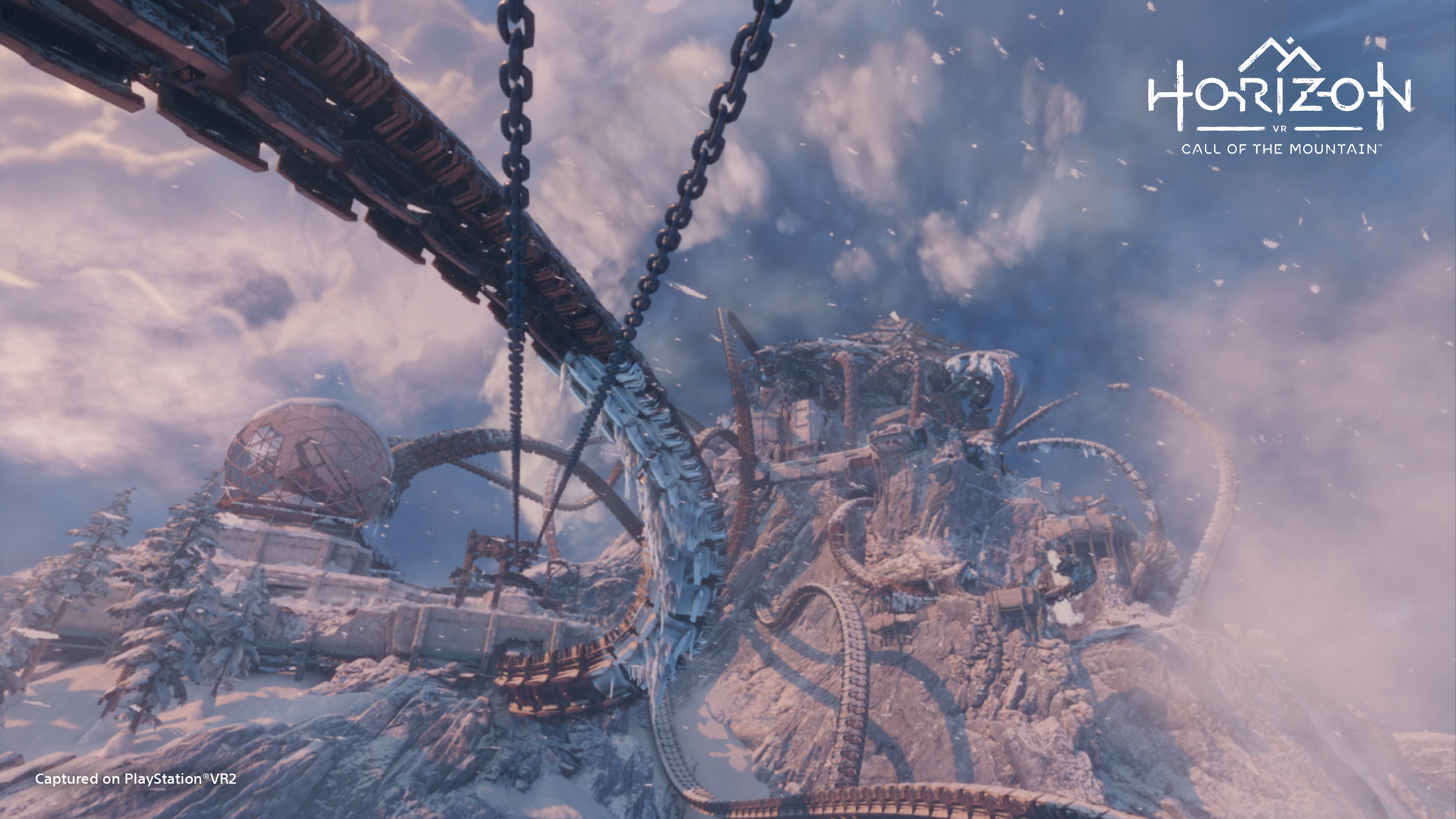
When PSVR 2’s price was initially revealed, I couldn’t help but double-take. Not only is this headset more expensive than a PS5, there’s very little in the way of PSVR 2 exclusive games. Instead, we’ve got a launch lineup of PSVR and Quest 2 ports, along with the odd VR update for games like Gran Turismo 7 and No Man’s Sky.
If you’ve been big into VR in the past, then most of PSVR 2’s library, as it stands, is games you’ve played before. Many of which are indeed some of the best VR games, and benefit from the headset’s higher resolution and better performance, but where’s the showstopper that’ll help make that sky-high price just a little easier to stomach?
Thankfully it’s already here on PSVR 2, the headset’s one major launch exclusive is Horizon: Call of the Mountain. It’s the game Sony’s clearly placed the most faith in, offering a bundle of the headset and the game together. And that faith was well founded, as it’s hard to think of a more fun, immersive VR launch experience than this on PS5.
Running up that hill

Horizon: Call of the Mountain is a relatively simple title. A first-person, linear adventure game, you’re placed in the shoes of new protagonist Ryas. You might balk at the idea of not playing as Aloy in a Horizon game, but I quickly warmed to the hero.
Ultimately, the protagonist and supporting characters in Horizon: Call of the Mountain matter little. The razor-thin story is the game’s weakest part. Developers Guerrilla Games and Firesprite seem more concerned with providing an immersive VR experience first and foremost.
And this is where Call of the Mountain had me instantly hooked. As I step onto a ruined dock after narrowly surviving a (admittedly terrifying) Snapmaw attack, I have to climb to a higher point to get my bearings and escape the merciless machines below.
It’s this climb where Horizon: Call of the Mountain shows you what PSVR 2’s Sense controllers can do. Moving your arms in real time, squeezing the triggers to dig Ryas’s fingers into the side of a cliff face, it all feels natural, accurate, and immensely gratifying.
Sign up for breaking news, reviews, opinion, top tech deals, and more.
I’d say it’s effortless, but you’re also giving your arms a real workout; particularly with Call of the Mountain's longer, trickier climbs. And as someone deathly afraid of heights, too often did I make the mistake of looking down and being met with a mortifying 300-meter drop.
Drink it all in

I appreciate, too, just how well-paced Horizon: Call of the Mountain is. After a major climbing or combat segment, you’ll often have time to rest in a more open area where you can explore and take part in fun activities and distractions. You can look around for hidden targets to shoot, but I stumbled across even more interesting examples.
One was a selection of working musical instruments like drums, maracas, and even a set of pan pipes. In another instance, I found a blank wall with a conveniently placed assortment of paintbrushes. I always love little pace breakers like this in VR; they allowed me to relax for a few minutes while showing how creative devs can be with the tech.
This level of interactivity ties into Call of the Mountain’s brilliant difficulty curve, too. As you progress further into the game, the time you can spend smelling the roses decreases. Climbing and combat segments start appearing closer together; the more I play, the more thrilling the game becomes.
While climbing in Call of the Mountain becomes a chill endeavor, combat is anything but. While encounters can feel scripted – you’ll rarely square off against more than two or three enemies at a time – most feel memorable because of it. Largely, it’s just you, a machine or two, and how well you can aim.
Reaching behind my back to pull an arrow from my quiver, then hurriedly knocking it and aiming for that sweet weak spot constantly felt intense and quite challenging. Keeping the flowchart of readying an arrow, aiming, dodging, firing, looking for resources, rinse and repeat, all becomes much tougher when facing some of Call of the Mountain’s more intimidating boss encounters. And being right there in VR perspective helps ground you in the world, which is often quite terrifying.
A bright future?

Horizon: Call of the Mountain doesn’t quite dethrone Half-Life: Alyx as the definitive VR experience. But as the flagship title for PSVR 2, it sells the headset.
VR, at its best, should be a deeply thrilling and immersive experience. And Call of the Mountain checks all the right boxes here. A straightforward yet involving gameplay loop helps keep the game feeling fresh throughout its runtime, and I can only hope Sony has similar plans for its other series in VR. All I’m saying here is that I’d love a Sly Cooper VR stealth game.
Ultimately, Horizon: Call of the Mountain is a brilliant start for PSVR 2. And it managed to show me just how powerful this headset is, far better than any PSVR or Quest 2 port did. If this is just the beginning of Sony’s ambitions for its new headset, then the future of PSVR 2 could be very promising indeed.

Rhys is TRG's Hardware Editor, and has been part of the TechRadar team for over four years. Particularly passionate about high-quality third-party controllers and headsets, Rhys strives to provide easy-to-read, informative coverage on gaming hardware of all kinds. As for the games themselves, Rhys is especially keen on fighting and racing games, as well as soulslikes and RPGs.